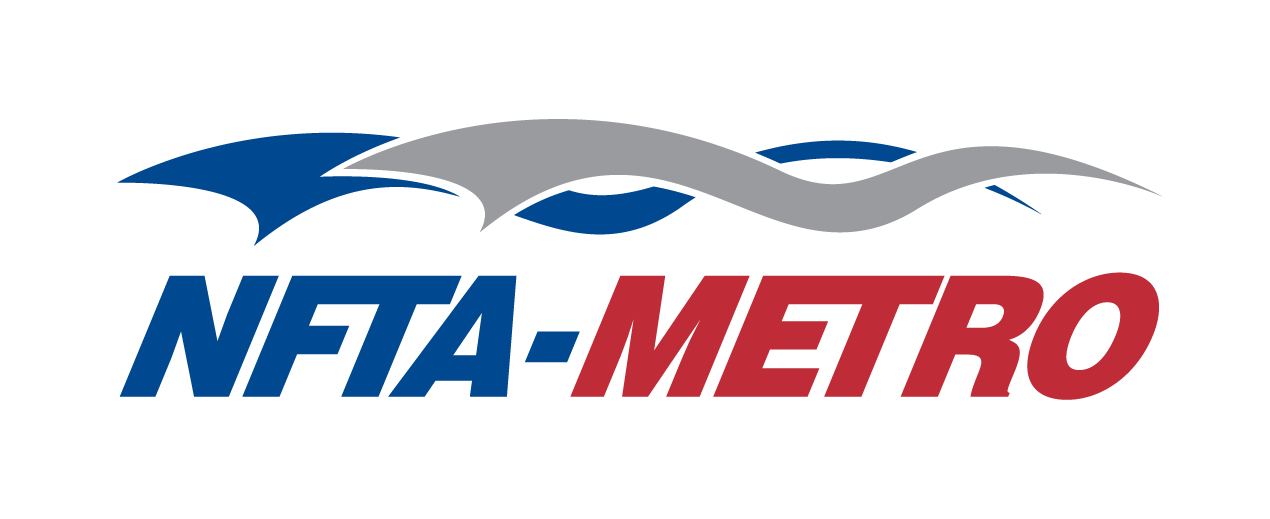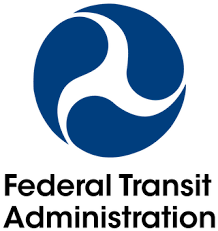FAQs
Light Rail Transit (LRT) and Bus Rapid Transit (BRT) are two forms of premium transit service, each providing increased comfort and convenience to riders.
Premium transit is often characterized as an investment that gives preferential treatment to transit in the form of exclusive or shared transit lanes that may also use technologies that provide transit a priority at signalized intersections. Exclusive transit lanes are transitways that are separate from automobile lanes.
The following descriptions for each mode were defined by the Federal Transit Administration (FTA) National Transit Database Glossary.
Light Rail Transit (LRT): A rail transit mode that typically is electric with a light volume traffic capacity compared to heavy rail. It is characterized by:
- Passenger rail cars operating singly (or in short, usually two car trains) on fixed rails
- Low or high platform loading
- Vehicle power drawn from an overhead electric line via a trolley or a pantograph
LRT typically operates in exclusive rights-of-way but can operate in mixed traffic when needed. Light rail traditionally operates between multiple cities and jurisdictions, linking major destinations.

Bus Rapid Transit (BRT): High-quality bus-based transit system that delivers fast and efficient service. A lower cost alternative to light rail. BRT is generally characterized by:
- Dedicated lanes and busways
- Traffic signal priority
- Off-board fare collection
- Elevated platforms
- Enhanced stations/stops
BRT systems can operate on all types of running ways, from mixed with automobiles to separated transitways.

This is a proposal by the Niagara Frontier Transit Metro System, Inc. (Metro), a wholly owned subsidiary of the Niagara Frontier Transportation Authority (NFTA), to expand high-quality transit in the Buffalo-Amherst-Tonawanda Corridor. The project corridor is seven miles long and would begin at Metro's current terminus at University Station on the University of Buffalo (UB) South Campus to Tonawanda and Amherst. Both a light rail transit (LRT) extension and a bus rapid transit (BRT) line are being considered. Each would essentially follow the same alignment primarily at-grade, and include ten stations, two with park & ride facilities and an overnight storage and light maintenance facility. The Project is included in the Greater Buffalo Niagara Regional Transportation Council's (GBNRTC) 2050 long-range plan as regionally significant.
Improvements to transit service in the Greater Buffalo region have been considered for more than 50 years. The concept for Metro Rail evolved in the 1960s and 1970s as one segment of a proposed 43-mile network of rapid-transit rail lines across the region, with plans initially developed for a 14-mile rail line running between downtown Buffalo and north of the planned University of Buffalo (UB) North Campus in Amherst. Due to funding, the rail line was scaled back to a 6.4-mile rail line terminating at the UB South Campus. This service opened in 1985 and now operates as Metro Rail.
In the years since Metro Rail operations began, the region has evolved. Billions of dollars in investment have transformed downtown and the rail corridor, with millions more in new development planned or in progress. UB's three campuses are a vital engine of the region's economy. The expansion of high-quality transit to Amherst and Tonawanda would provide easy access to destinations, offer new opportunities to create jobs, connect residents to employment, and improve the quality of life throughout the region.
The Buffalo-Amherst-Tonawanda Corridor Transit Expansion Project is consistent with the Greater Buffalo-Niagara Regional Transportation Council's (GBNRTC) Moving Forward 2050 Plan. This is the region's long-range transportation plan which provides direction on how transportation investment will be used to strengthen communities and enhance our economy.
GBNRTC and NFTA prepared a comprehensive transit-oriented development plan for implementing transit-oriented development along the existing Metro Rail corridor, as well as the proposed expansion. The plan, outlined in the Comprehensive Transit-Oriented Development 2019 Final Report and the 2023 Comprehensive Transit-Oriented Development Strategic Implementation Plan, Planning Program - Phase II, include land use and zoning recommendations for the towns of Amherst and Tonawanda to promote a transit-supportive environment and set the stage to support transit-supportive zoning and land use policies.
The project is also consistent with One Region Forward, a highly collaborative plan and process designed to build on the Buffalo-Niagara region's momentum toward sustainable development and set the stage for a more vital future in our region.
Transit is a regional asset which many rely on. Metro Rail is a great example. Over more than 30 years of night and day operation, Metro Rail has supported 200 million trips to work, concerts, sporting events, doctor's appointments, classes and more. Transit enhances economic growth, community development, and improves the quality of life for all in the region. In addition, the goals of the Buffalo-Amherst-Tonawanda Corridor Transit Expansion Project include environmental sustainability and improvements to make Metro Rail more attractive and accessible.
Since the release of the Draft EIS performed in accordance with the State Environmental Quality Review Act (SEQRA) in 2020, the Federal Transit Administration (FTA) has been designated as the Lead Federal Agency for the Project's environmental review process. As a result, the Project must meet and follow the environmental review procedures set forth under the National Environmental Policy Act (NEPA). As part of this process, the FTA has requested a second Build Alternative, a Bus Rapid Transit (BRT) line, be evaluated in addition to the Light Rail Transit (LRT) Build Alternative. With the completion of the federal environmental review process, the NFTA will be positioned to advance the Project into the FTA's Capital Investment Grant (CIG) process and apply for federal capital funding to support construction.
Two build alternatives, a light rail transit (LRT) expansion and a bus rapid transit (BRT) line, are under consideration.
The LRT Build Alternative is an approximately 7-mile extension of Metro's existing light rail transit, Metro Rail. The LRT extension would be primarily at-grade, except for a 0.8-mile underground segment from the existing Metro Rail University Station to Niagara Falls Boulevard and at the intersection of Maple Road and Sweet Home Road. Ten stations are proposed, two with park & ride facilities, and an overnight storage and light maintenance facility located near the end of the line. The trackway would be configured with two tracks - one for northbound service and one for southbound service, generally within the existing roadway right-of-way.
The BRT Build Alternative would provide transit service north from the existing Metro Rail University Station for approximately 7-miles along the same at-grade alignment as the LRT Build Alternative with the same number of stations in the same locations. However, a transfer would be required between the existing Metro Rail operations at University Station to the BRT service. A new BRT vehicle storage and maintenance facility would also be required.
The initial LPA accepted at the conclusion of the 2017 Alternatives Analysis (AA) was generally defined as extending light rail service from the existing Metro Rail terminus at University Station, continuing underground along Bailey Avenue to a portal on Eggert Road where it would continue at-grade or on the surface of Niagara Falls Boulevard to Maple Road to Sweet Home Road, onto the UB North Campus then along Audubon Parkway where it would end near the I-990.
During the conclusion of the AA, Metro received feedback from various stakeholders, municipal jurisdictions, and the public regarding an alignment option exiting the University Station under Kenmore Avenue and entering onto Niagara Falls Boulevard prior to Eggert Road. Before formally initiating the environmental analysis, NFTA and its consultant team evaluated trade-offs between this alignment and the LPA by comparing order of magnitude costs, overall constructability, operating costs, right-of-way impacts, travel times, traffic, accessibility, and other criteria to determine which alignment would be most beneficial.
The alignment option using Kenmore Avenue and Niagara Falls Boulevard with a portal just north of Kenilworth Avenue, rather than running beneath Bailey Avenue, was determined to be most beneficial and is now the refined LPA. North of Eggert Road the alignment is the same as the original LPA described above. The refined and current LPA was accepted by the NFTA Board of Commissioners, the study's Technical Advisory and Steering Committees, and was reviewed with the general public at a meeting in December 2019.
In addition to the Buffalo-Amherst-Tonawanda Corridor Transit Expansion Project, the NFTA is making investments along other transportation corridors as part of a broader vision for an expanded rapid transit network across the Buffalo-Niagara region. This includes implementation of the region's first BRT line along Bailey Avenue in the City of Buffalo, which will provide enhanced connections between residential neighborhoods and important activity centers throughout the Bailey Avenue corridor, including Metro Rail service at University Station. In addition, the NFTA's project to extend Metro Rail service to a new passenger station in the DL&W trainshed is a significant step toward future rail expansion to the south and east.
Yes, and those considerations will be included as planning proceeds. Bike and pedestrian facilities will be evaluated during the environmental process and conceptual engineering. As conceptual designs are developed, the goal is to convert the roadway into multi-modal corridors incorporating a complete streets concept, which includes bike and pedestrian facilities. This is possible for both the LRT and BRT alternatives. Bike and pedestrian facilities leading to stations will be incorporated to ensure safe connections are provided to serve riders.
NFTA's existing Metro Rail cars and buses can accommodate up to two bikes per vehicle. It is assumed that future Metro Rail cars and BRT vehicles would meet the same accommodations. For further information relating to bikes on buses and Metro Rail, visit https://metro.nfta.com/programs/bikes-on-metro
The current plan is to keep the cost of a ride the same as it is now.
The NFTA has upgraded the fare collection system for Metro Rail and Bus system. The new system includes ticket vending machines as well as a variety of cashless payment options including smart cards and mobile ticketing using smart phone technology. Metro Rail's current fare collection system will be assumed for the expansion project.
The NFTA has created a project website at NFTAMetroTransitExpansion.com to provide information, updates, and meeting schedules. The website also has an comment form for you to provide input. Comments can also be sent to transitexpansion@nfta.com.
Glossary/
- AA:
- Alternatives Analysis
- ADA:
- Americans with Disabilities Act of 1990, as amended
- CFR:
- Code of Federal Regulations
- CIG:
- Capital Improvement Grant
- DEIS:
- Draft Environmental Impact Statement
- EIS:
- Environmental Impact Statement
- EJ:
- Environmental Justice
- EPA:
- United States Environmental Protection Agency
- FEIS:
- Final Environmental Impact Statement
- FFGA:
- Full Funding Grant Agreement
- FTA:
- Federal Transit Administration
- GBNRTC:
- Greater Buffalo-Niagara Regional Transportation Council
- LOS:
- Level of Service
- LPA:
- Locally Preferred Alternative
- LRT:
- Light Rail Transit
- LRTP:
- Long Range Transportation Plan
- MAP-21:
- Moving Ahead for Progress in the 21th Century Act
- NEPA:
- National Environmental Policy Act
- NFTA:
- Niagara Frontier Transportation Authority
- NOI:
- Notice of Intent
- NYSDEC:
- New York State Department of Environmental Conservation
- NYSDOT:
- New York State Department of Transportation
- O&M:
- Operations and Maintenance
- ROMF:
- Rail Operations and Maintenance Facility
- ROD:
- Record of Decision
- ROW:
- Right-Of-Way
- SEQRA:
- New York State Environmental Quality Act
- Scoping:
- Process used to determine the appropriate contents of an Environmental Impact Statement (EIS). Public and agency participation is an integral part of scoping.
- TOD:
- Transit Oriented Development
- UB:
- University at Buffalo, The State University of New York





